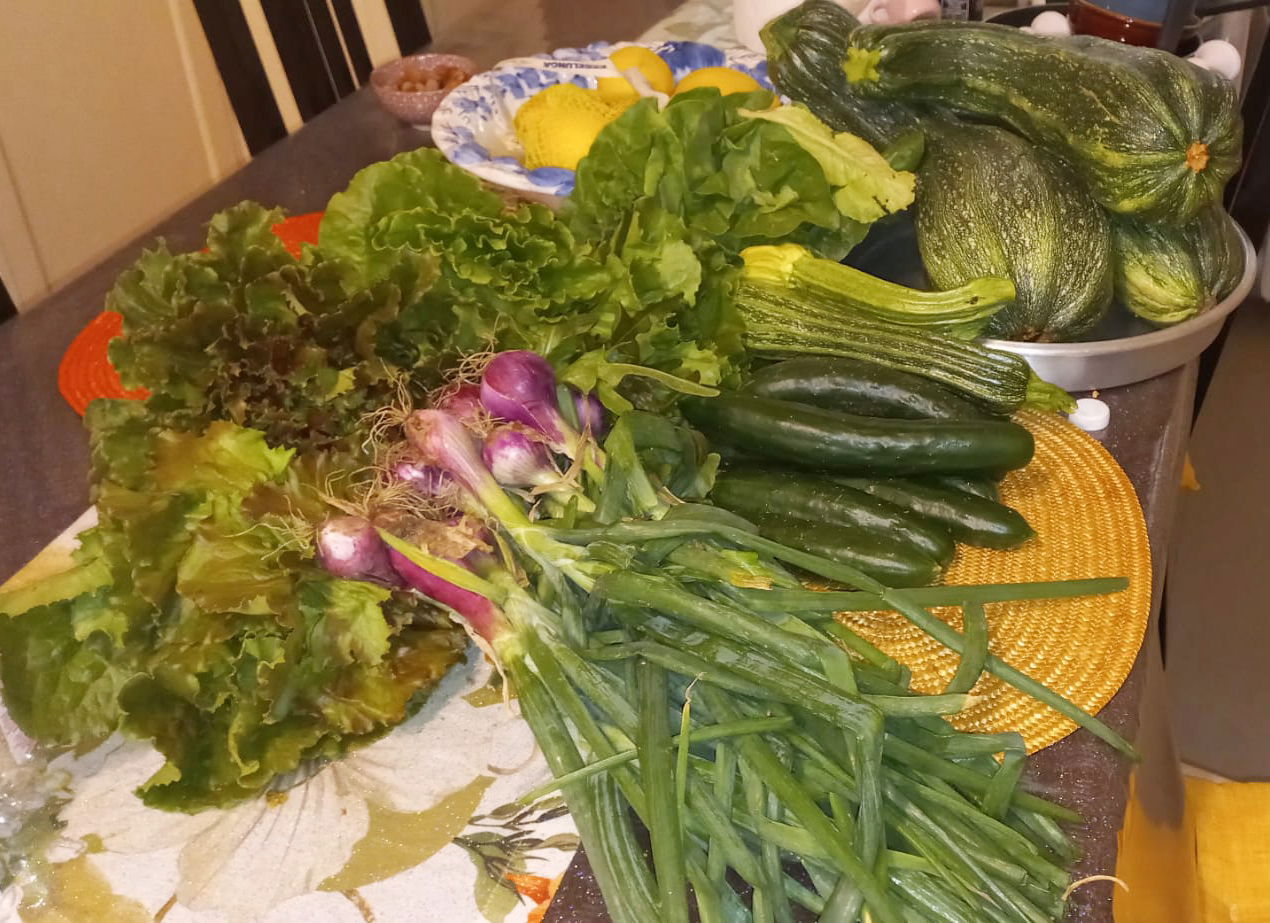Cultivating an Orto: An Appreciation Of The Rhythm Of Nature

L’orto è soprattutto utile alla vostra sussistenza, alla vostra salute, ma pure fonte di gioia e di bellezza. (Above all, the vegetable garden is valuable for your survival and health and a source of happiness and beauty.) Luca Mercalli, Prepariamoci, 2011. Taking care of an orto (vegetable garden) promotes a mindful approach to obtaining daily nourishment and finding joy in preparing a meal composed of ingredients we have cultivated ourselves, consuming the food slowly, and enjoying the nutritional benefits. An orto allows us to nurture and harvest fresh, safer, organic produce free from pesticides and chemicals. The well-organised plantations of vegetables and fruits show nature's beautiful variety of colours, bringing peace to our eyes and souls.
An orto is significant in many Italians' daily lives, culture, and sustainability practices. Whether in urban or rural areas, cultivating an orto is a beloved activity rooted in both traditional and modern trends toward organic and local food production. In rural areas, many Italian families maintain small vegetable gardens as part of their lifestyle, which produce fresh vegetables, fruits, and essential herbs for classic Italian cooking.
Many people pass down gardening knowledge through generations, making it a practice that promotes a sense of continuity and cultural identity. It’s a way to share knowledge about the importance of good quality food, nature, and hard work while also spending time together, having a conversation with Mr Giacomo Saliasi, who learnt how to cultivate an orto from his neighbour when he was 15. His passion and hobby for gardening keep him active and relaxed simultaneously and satisfy him and his loved ones with the produce from his own orto, where he puts his effort, love, and attention. In rural areas, families maintain orti urbani (community gardens), where neighbours and friends promote social interaction and strengthen bonds by sharing tips, seeds, and produce. Community vegetable gardens are becoming more popular in big cities such as Rome, Milan, and Florence. These shared spaces allow residents to grow their produce in small plots of land and on balconies, terraces, or rooftops.
Common vegetables and herbs in an orto include pomodori (tomatoes), one of the most commonly grown plants in Italian gardens, used in making sauces and salads. Basilico (basil), one of the essential herbs in Italian cooking, is often grown alongside tomatoes and is key for dishes like pesto, caprese salad, and pasta with pomarola (tomato sauce). Zucchini and its flowers are widely cultivated and used in various dishes, from pasta to frittata (omelette). Melanzane (eggplants), pepperoni (peppers), and insalata (salads) are also common crops. Some herbs, like rosemary, oregano, and thyme, are also grown in many orti (vegetable gardens).
Italian gardeners often grow fruits and vegetables for personal consumption, but there are also larger orti dedicated to commercial purposes. The size of orti for business purposes can vary depending on the scale of production, market demands, and the type of business model. Many people sell the produce from their orto at local farmers’ markets, where fresh, seasonal vegetables, fruits, and herbs are sold directly to the public.
Italian culture's concept of an orto is based on the philosophy of living in harmony with the environment and respecting natural resources. The four seasons determine a carefully planned gardening schedule, from planting to harvesting and preparing the orto for the next cycle. Adapting the gardening activities based on the climate and each season brings its own set of tasks, crops, and challenges.